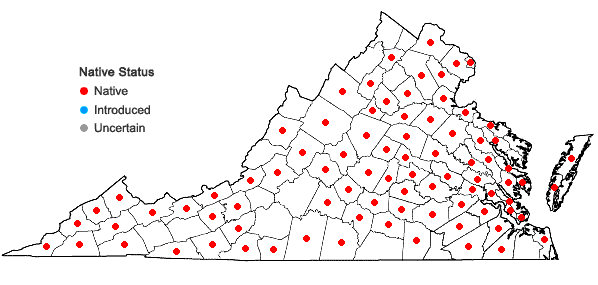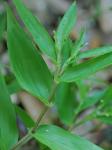Dichanthelium commutatum (J.A. Schultes) Gould var. commutatum

Detail
- Family
- Poaceae
- Botanical Name
- Dichanthelium commutatum (J.A. Schultes) Gould var. commutatum
- Common Name
- Variable Panic Grass, Variable Witchgrass
- Synonym(s)
- Dichanthelium commutatum (Schultes) Gould ssp. commutatum
- Flora of Virginia Name/Status
- Dichanthelium commutatum (J.A. Schultes) Gould var. commutatum
- Comments
- In some parts of the state, Dichanthelium commutatum varieties segregate sharply, both morphologically and ecologically; in other areas, they are often not clearly separable. In general, var. commutatum is a taxon of more or less mesic habitats while var. ashei is typical of dry, often sterile soils, but the two can occasionally co-occur. In addition, some specimens from dry, sandy sites of the coastal plain that have been called Dichanthelium commutatum var. commutatum are taller, with thicker culms and larger, stiffer, blue-green leaves. They appear to be better referred to Dichanthelium mutabile (Scribner & J.G. Smith ex Nash) Wipff and have now been mapped as such. D. commutatum ssp. equilaterale (Scribner) Freckmann & Lelong, from further south, is similarly robust but has longer first glumes than most Virginia material. Flora of the Southeastern U.S. (Weakley et al. 2023) attributes C. commutatum var. joorii, with pointed spikelets, to the Virginia Coastal Plain, but we have been unable to locate a supporting specimen. In addition, there are disagreements among specialist about the application of the name joorii.
- Habitat
- In varied, mostly mesic to dry-mesic (occasionally dry) upland forests, well-drained bottomland forests, alluvial swamp hummocks, clearings, and old fields; tolerant of a range of soil chemistries. Common throughout.
- Native Status
- Native
To save this map, right-click (control-click for Mac users) on the map and choose "Save Image As...".
